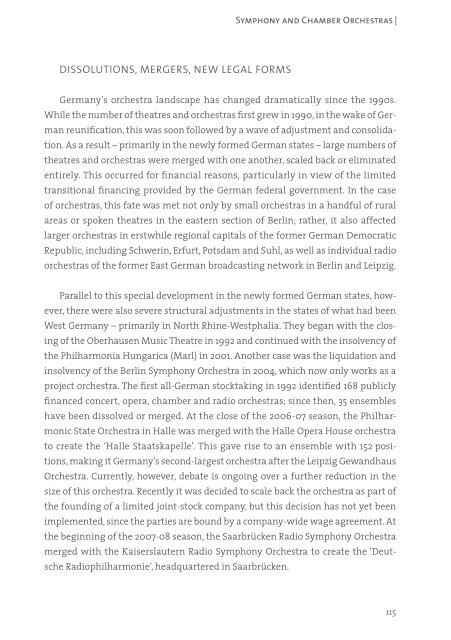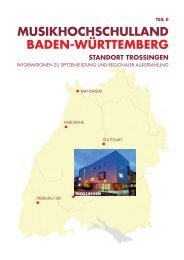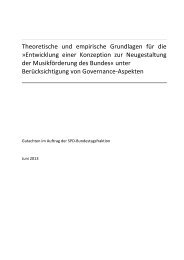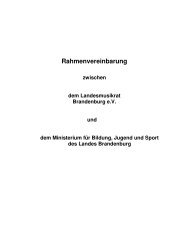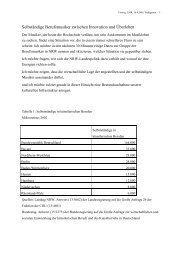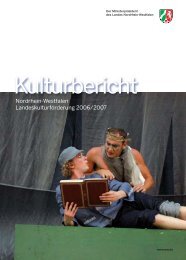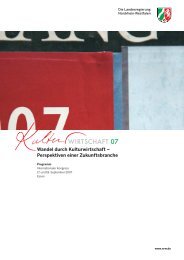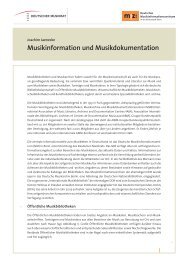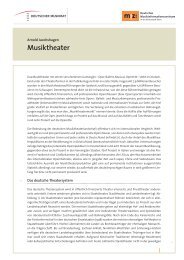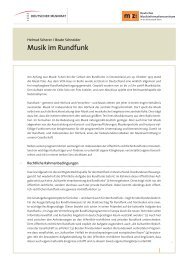SYMPHONY AND CHAMBER ORCHESTRAS - Miz.org
SYMPHONY AND CHAMBER ORCHESTRAS - Miz.org
SYMPHONY AND CHAMBER ORCHESTRAS - Miz.org
You also want an ePaper? Increase the reach of your titles
YUMPU automatically turns print PDFs into web optimized ePapers that Google loves.
DISSOLUTIONS, MERGERS, NEW LEGAL FORMS<br />
Symphony and Chamber Orchestras |<br />
Germany’s orchestra landscape has changed dramatically since the 1990s.<br />
While the number of theatres and orchestras first grew in 1990, in the wake of Ger-<br />
man reunification, this was soon followed by a wave of adjustment and consolida-<br />
tion. As a result – primarily in the newly formed German states – large numbers of<br />
theatres and orchestras were merged with one another, scaled back or elimi nated<br />
entirely. This occurred for financial reasons, particularly in view of the limited<br />
transitional financing provided by the German federal government. In the case<br />
of orchestras, this fate was met not only by small orchestras in a handful of rural<br />
areas or spoken theatres in the eastern section of Berlin; rather, it also affected<br />
larger orchestras in erstwhile regional capitals of the former German Democratic<br />
Republic, including Schwerin, Erfurt, Potsdam and Suhl, as well as individual radio<br />
orchestras of the former East German broadcasting network in Berlin and Leipzig.<br />
Parallel to this special development in the newly formed German states, how-<br />
ever, there were also severe structural adjustments in the states of what had been<br />
West Germany – primarily in North Rhine-Westphalia. They began with the clos-<br />
ing of the Oberhausen Music Theatre in 1992 and continued with the insolvency of<br />
the Philharmonia Hungarica (Marl) in 2001. Another case was the liquidation and<br />
insolvency of the Berlin Symphony Orchestra in 2004, which now only works as a<br />
project orchestra. The first all-German stocktaking in 1992 identified 168 pub licly<br />
financed concert, opera, chamber and radio orchestras; since then, 35 ensembles<br />
have been dissolved or merged. At the close of the 2006-07 season, the Philhar-<br />
monic State Orchestra in Halle was merged with the Halle Opera House orchestra<br />
to create the ‘Halle Staatskapelle’. This gave rise to an ensemble with 152 posi-<br />
tions, making it Germany’s second-largest orchestra after the Leipzig Gewandhaus<br />
Orchestra. Currently, however, debate is ongoing over a further reduction in the<br />
size of this orchestra. Recently it was decided to scale back the orches tra as part of<br />
the founding of a limited joint-stock company, but this decision has not yet been<br />
implemented, since the parties are bound by a company-wide wage agree ment. At<br />
the beginning of the 2007-08 season, the Saarbrücken Radio Symphony Orchestra<br />
merged with the Kaiserslautern Radio Symphony Orchestra to create the ‘Deut-<br />
sche Radiophilharmonie’, headquartered in Saarbrücken.<br />
115


